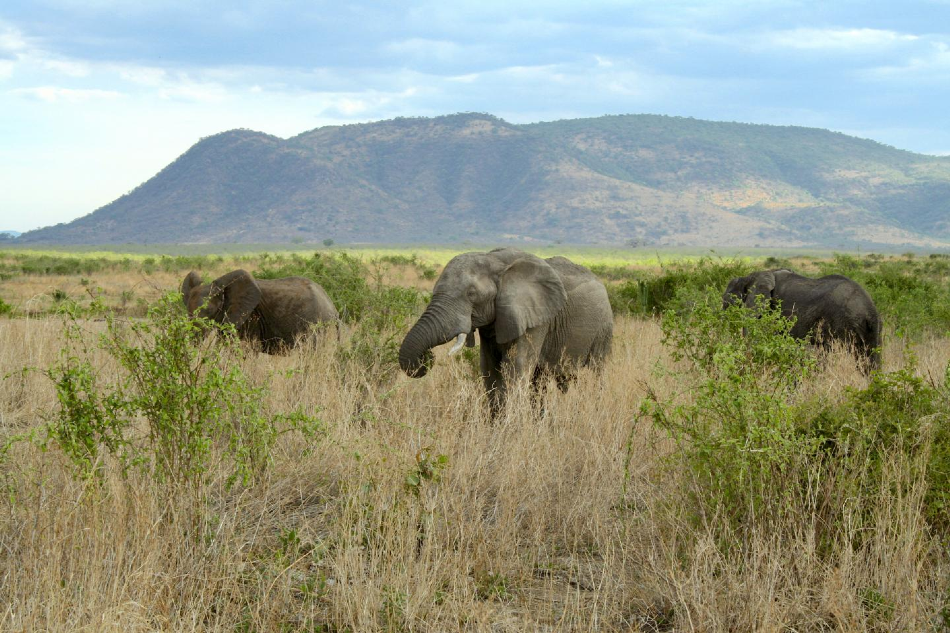Jul 6 2020
When individuals envisage engineering in nature, they are likely to think of beavers—the dam-building, tree-felling rodents whose handiwork can mold the landscape by producing lakes and altering the route of rivers.
 Elephants engineer their ecosystems—they root out saplings and small trees, creating habitats for smaller vertebrates, which helps maintain the grassland. Image Credit: Justin Yeakel.
Elephants engineer their ecosystems—they root out saplings and small trees, creating habitats for smaller vertebrates, which helps maintain the grassland. Image Credit: Justin Yeakel.
However, beavers are not the only organisms to remold their surroundings. A squirrel, which accidentally plants oak trees, is also regarded as an “ecosystem engineer”—generally speaking, any organism whose effect on the surroundings outlasts its own lifespan.
According to Justin Yeakel, an ecologist at the University of California, Merced, and a former Santa Fe Institute Omidyar Fellow, shipworms could be the coolest of such biological builders. These organisms eat through rocks in streams, producing comfortable abodes for forthcoming invertebrate inhabitants.
Yeakel is also the lead author of the latest study that models the long-term effect of ecosystem engineers. For a long time, scientists have accounted the role of ecosystem engineers in natural histories, but this is one of the first studies to quantitatively evaluate them in an ecological network model.
We wanted to understand how food webs and interaction networks were established from a mechanistic perspective. To do that, you have to include things like engineering because species influence their environment and there’s this feedback between the environment to the species.
Justin Yeakel, Study Lead Author and Ecologist, Santa Fe Institute
The model specifically employs simple rules to demonstrate when species go extinct, how species interactions can alter over time, and how food webs can be organized. One remarkable outcome is that only a few ecosystem engineers have caused many instabilities and extinctions, while a majority of the ecosystem engineers have caused stability and fewer extinctions.
As you increase the number of engineers, that also increases the redundancy of the engineers and this tends to stabilize the system.
Justin Yeakel, Study Lead Author and Ecologist, Santa Fe Institute
So, how does one produce an ecological network model? It is extremely abstracted—there are no concrete environmental features such as rivers, or particular species such as beavers. Everything boils down to interactions: species can make, need, or eat.
In this context, nature turns into a network of interactions. For instance, bees consume nectar from flowers; flowers require bees to be pollinated; and trees make shade that is required by flowers.
The scientists applied a small number of rules to the model, the foremost one being that species must eat only one thing for their survival but they must get all the things they require.
In less intangible terms, even if a single flower species becomes extinct, bees may survive on nectar obtained from other kinds of flowers. However, if either trees or bees fail to offer shade or pollination, which are required by flowers, then the flowers will become extinct.
By applying these rules, the models effectively produced ecological networks analogous to those seen in the real world, with a typical hourglass shape in the diversity of species—more diversity at the bottom and the top of the web, and less in the center.
To extend the model for upcoming studies, Yeakel has planned to integrate evolutionary dynamics so that species can modify what they eat, need, and make.
Before humans appeared two and a half billion years ago, cyanobacteria happened to be a planetary-scale engineer that gradually altered the composition of the whole atmosphere by oxygenating it.
However, in contrast to photosynthetic predecessors, “We’re making changes on ecological timescales rather than evolutionary timescales?” added Yeakel.
Is an organism that becomes a planetary-scale engineer doomed to extinction if it changes the environment too quickly?
Justin Yeakel, Study Lead Author and Ecologist, Santa Fe Institute
Journal Reference:
Yeakel, J. D., et al. (2020) Diverse interactions and ecosystem engineering can stabilize community assembly. Nature Communications. doi.org/10.1038/s41467-020-17164-x.